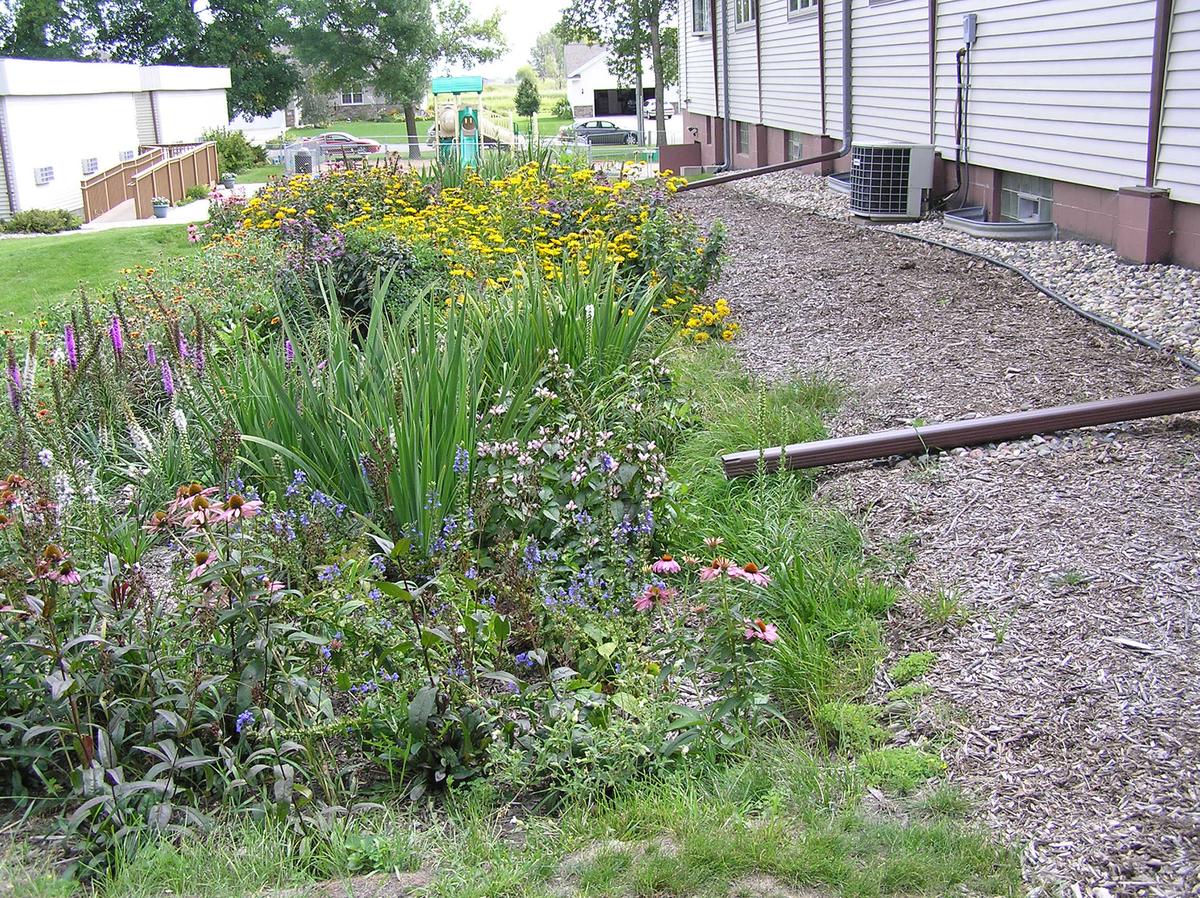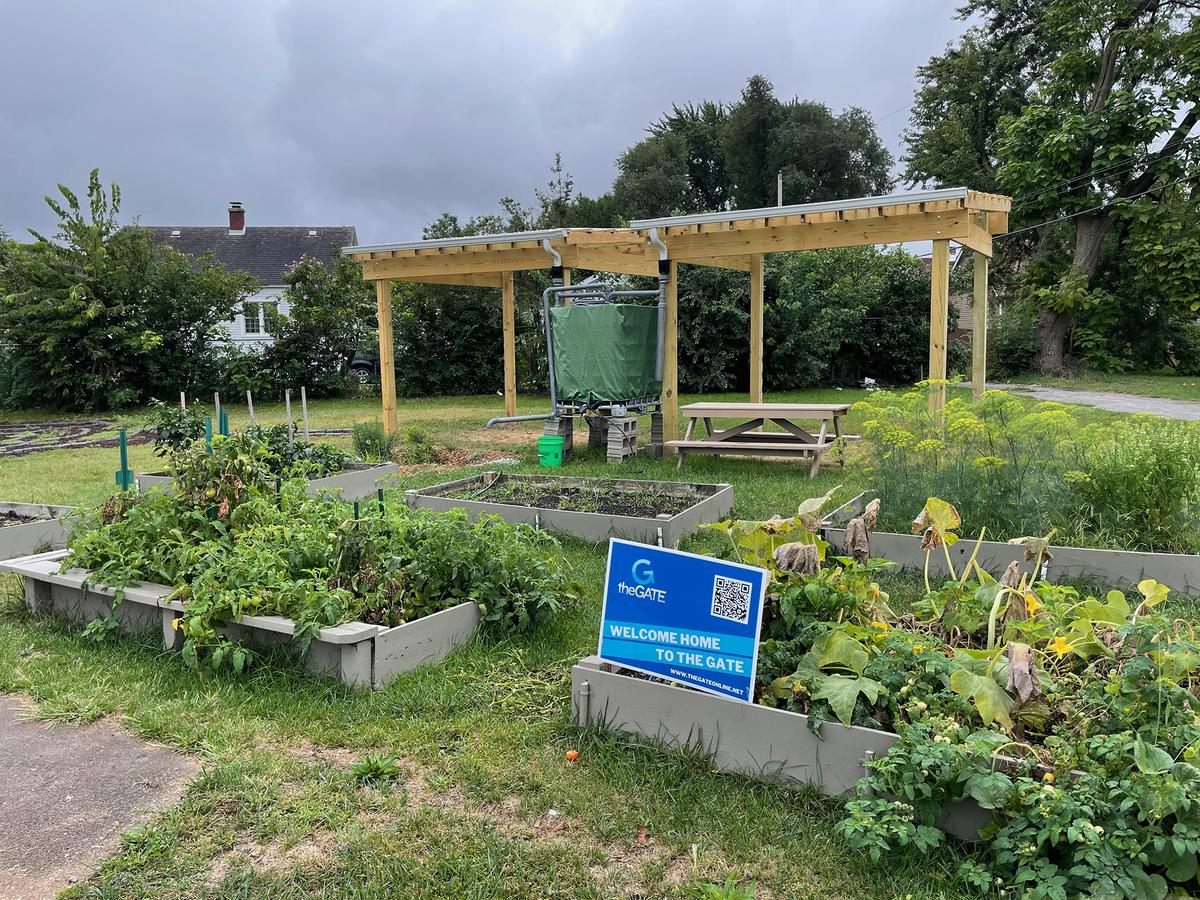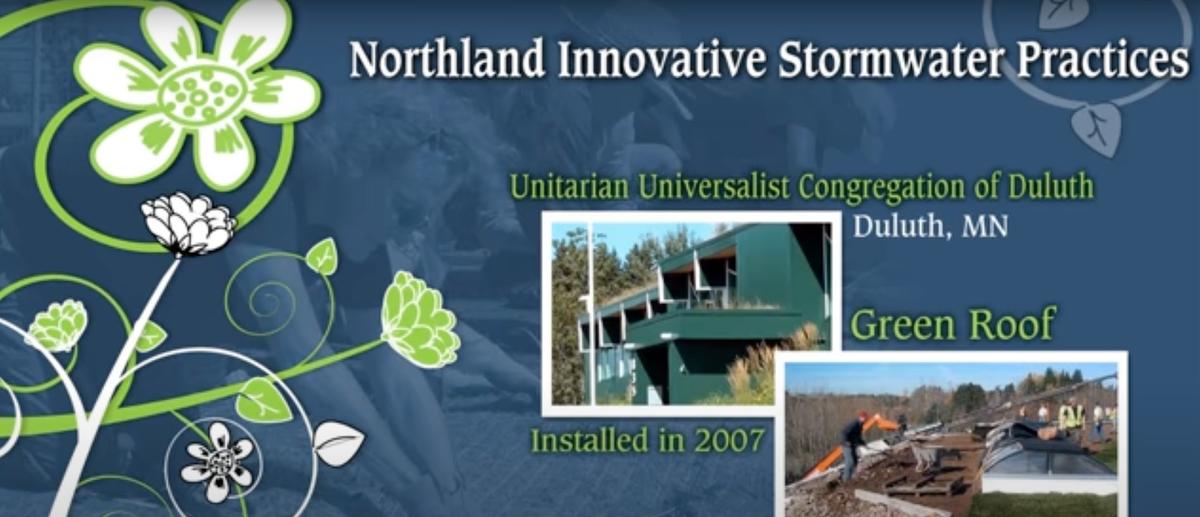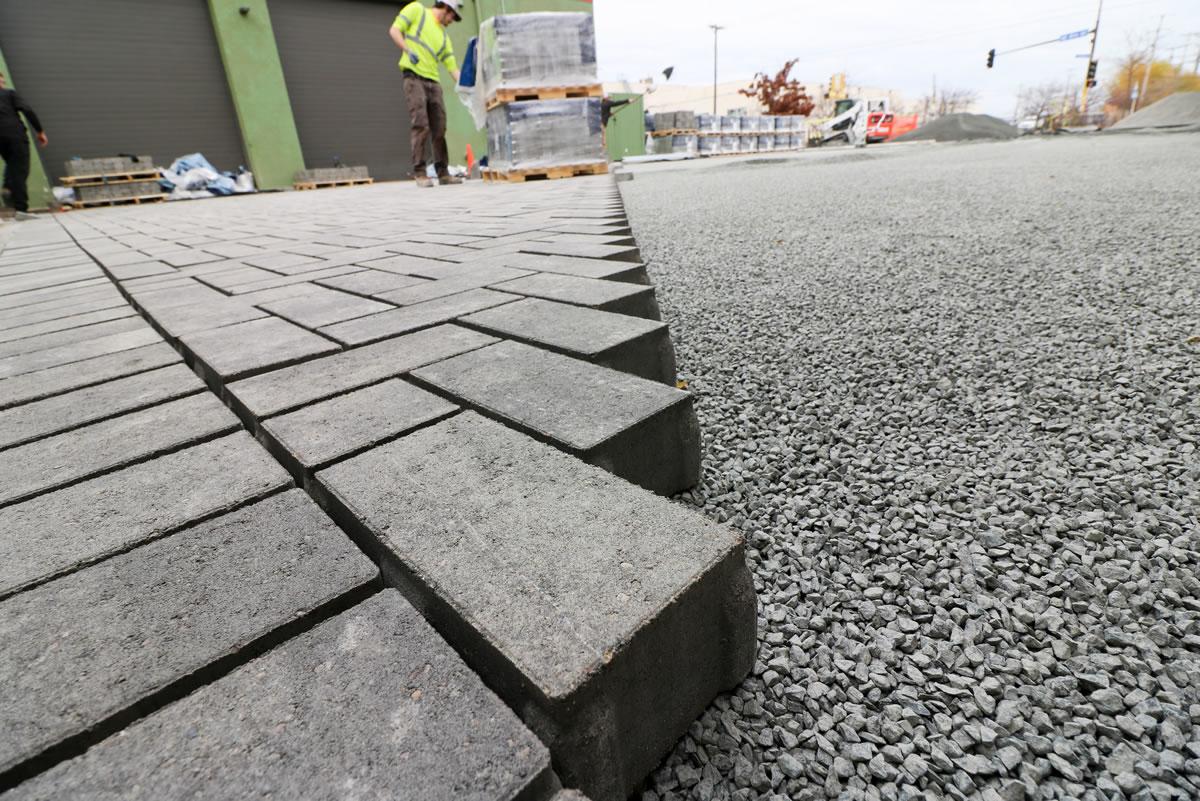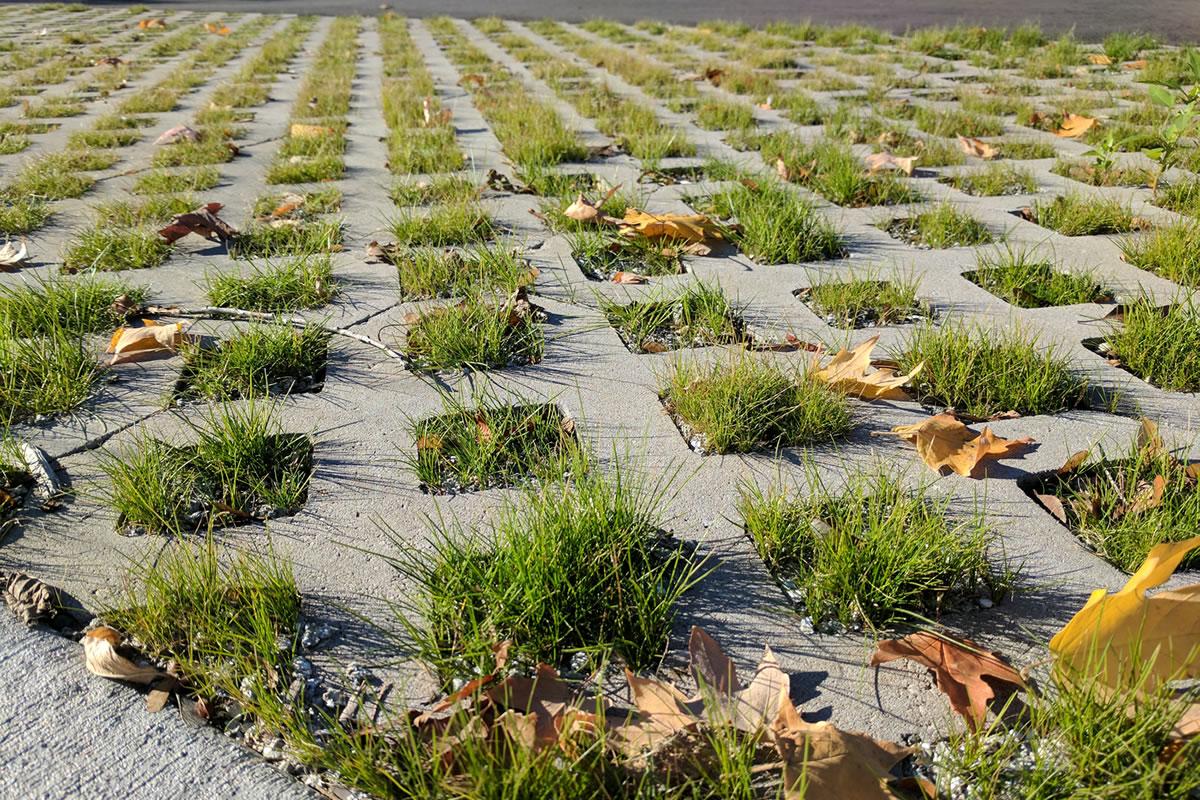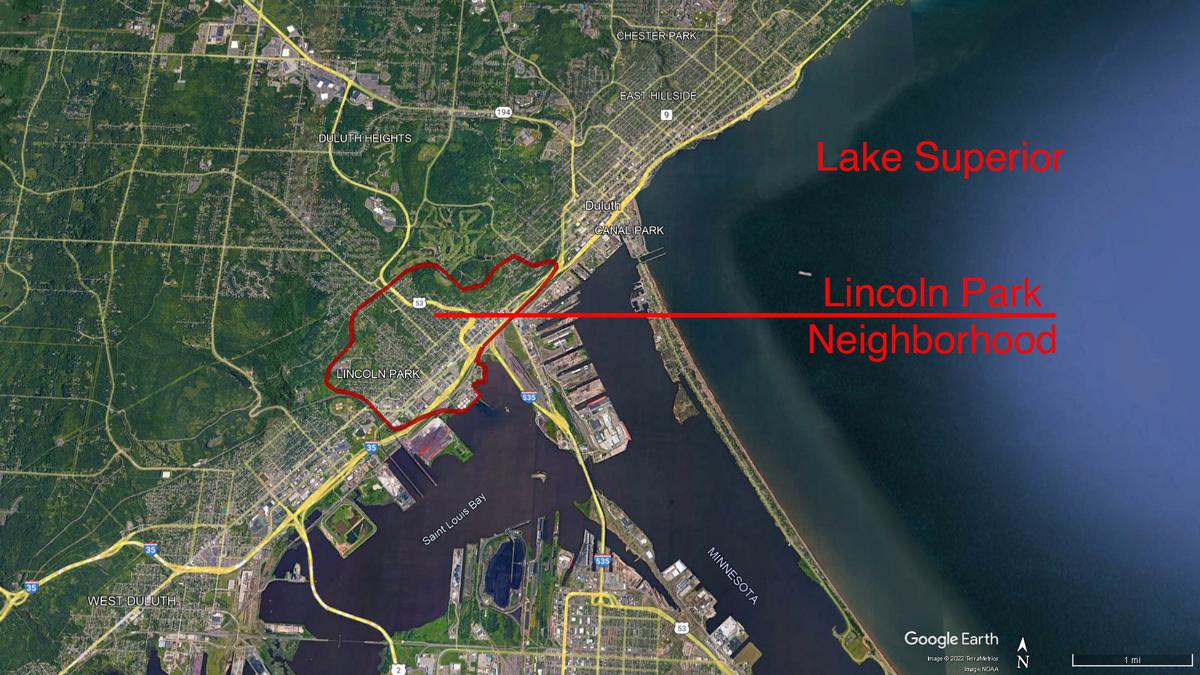
Our December 2022 extension column is by MNSG Resilience Extension Educator Madison Rodman and highlights Minnesota Sea Grant’s work on the One Block at a Time project.
Minnesota Sea Grant’s One Block project is helping people in vulnerable Great Lakes communities improve their resilience to the effects of flooding through equitable and inclusive stormwater management.
Changing precipitation patterns are affecting communities. People in communities across the Great Lakes are experiencing water challenges including flooding and damage to homes, businesses, and community infrastructure and degraded water quality of streams and lakes.
Vulnerable populations and marginalized communities are often the most affected yet have the fewest resources to address these challenges.
Green Infrastructure
The One Block project focuses on addressing the effects of flooding on a small, one-block scale using community-supported green infrastructure practices, which minimize flooding and maximize water quality by allowing water to slowly absorb where it falls.
Common green infrastructure practices include:
Rain Gardens
Rain gardens are designed to filter water into the ground and retain stormwater that would otherwise run into streets and storm sewers. Urban stormwater picks up nutrients, dirt, salt, fertilizers, pesticides, oil, bacteria, and garbage. Reducing runoff is critical to minimizing the impact stormwater has on the surrounding lakes and streams. MNPCA.
Planter Boxes and Rainwater Harvesting
Green Roofs
Green roofs have a layer of plant material that absorbs water like a sponge. They capture water when it rains, slowly releasing it through evaporation and plant use. Green roofs can significantly reduce the amount of rain water that would otherwise run off an impervious roof surface. Green roofs can also help reduce building energy usage and noise levels while increasing the durability and lifespan of the roof compared to conventional roofs. Green roofs are being increasingly used in urban areas where space constraints limit the use of other stormwater management practices. U.S. EPA.
Permeable Pavements
Permeable pavers (shown above) allow stormwater to soak into the ground by running down into the gaps between pavers. The pavers are installed over one or more base layers of stone and/or sand. In addition to providing a stable base for the pavers, these base layers provide drainage capacity and allow runoff to infiltrate the ground beneath. MWMO.org
Turf block (shown below) is a manufactured concrete block with gaps that allow vegetation to grow and let stormwater soak into the ground. It provides a stable base for walking and driving while also helping to capture runoff and filter out pollutants. MWMO.org
In addition to helping manage stormwater, green infrastructure has additional or co-benefits for people and their communities. Trees can provide shade that help cool an urban area, planter boxes can be used for food production, rain gardens can be community gathering spaces and outdoor places for rest and reflection.
What's So Special About Just One Block?
Minnesota Sea Grant developed a Ready for Rain One Block concept as a way to engage local government and residents in a shared leadership model in building community resilience to flooding.
Today
Working with local communities at a one-block scale allows Sea Grant extension educators to really get to know community members, build trusted relationships, and help them incorporate rain gardens, pervious pavements, and other green infrastructure elements in highly visible locations that community members can see, own, and relate to.
Tomorrow
It can be overwhelming for individuals to think about, let alone attempt to address, stormwater issues for an entire city, but the one-block-at-a-time model allows communities to install green infrastructure practices in small, manageable areas.
MNSG’s Ready for Rain One Block concept is adapted from the Center for Neighborhood Technology’s RainReady™ approach.
One Block Project Coordination
Minnesota Sea Grant has led and coordinated the three-state One Block project since the fall of 2021. Although each community faces different challenges, One Block team members come together to share experiences and lessons learned to strengthen individual efforts in our local communities.
One Block Sea Grant staff and project partners are working in four Great Lakes communities:
- Duluth, Minnesota
- Erie, Pennsylvania
- Hammond, Indiana
- Michigan City, Indiana.
Duluth Team One Block Activities
Minnesota Sea Grant Resilience Extension Educator Madison Rodman and Tiffany Sprague from the University of Minnesota Duluth Natural Resources Research Institute have been working with Rain Ready Housing Specialist and AmeriCorps VISTA staff members Morgan Bliss (2021-2022) and Maia Sowers (2022-present) to conduct a background vulnerability assessment of the Lincoln Park neighborhood of Duluth, Minnesota.
The Duluth team recently completed a community survey of water and climate challenges and opportunities for Lincoln Park. Data from the survey will be used as the foundation for community focus group meetings scheduled for winter 2023. Over three focus group sessions Lincoln Park residents and neighborhood leaders will work to prioritize their water concerns and share their visions for how the community could address their concerns. A goal of the focus group meetings is to identify a location and design for a community to create a green infrastructure installation. We anticipate project installation and a community celebration event to occur in the summer of 2023.
The Duluth portion of the One Block project was founded on work and conversations started through the Great Lakes One Water (GLOW) collaboration. GLOW is a network for collaborative community-engaged work focused on increasing community resilience to water challenges. The GLOW network started in 2018 and includes Minnesota Sea Grant, UMD Natural Resources Research Institute, Duluth Superior Area Community Foundation, City of Duluth, Ecolibrium3, and Udac.
Erie Team One Block Activities
Pennsylvania Sea Grant staff members Sara Stahlman and Nikki Jackson are leading One Block efforts in Erie, Pennsylvania. Their work helped bring unheard voices of vulnerable and marginalized communities into current climate conversations in their area. They hosted multiple listening sessions with community groups from around Erie County. The sessions helped identify climate-related needs and concerns and helped Erie move closer to identifying a demonstration site for an on-the-ground green infrastructure pilot project. Input from community members enhanced Erie’s background assessment on local vulnerabilities (which is being finalized), and their work with Penn State landscape and architectural design professionals helped their team visualize areas of Erie that are prone to flooding and other weather disasters.
Northwest Indiana Team One Block Activities
The One Block project team from Illinois-Indiana Sea Grant and Purdue University implemented two projects in Northwest Indiana in the summer of 2022 to create engagement and education opportunities that improve water sustainability and food security.
Sara McMillan from Iowa State University and Kara Salazar from Illinois-Indiana Sea Grant and the University of Purdue Extension coordinated local project efforts with Purdue Extension and partners to co-design and install community garden rainwater harvesting structures.
One of the structures is in Michigan City, Indiana, and is a partnership with the North Central Community Action Agencies Madeline & George Smrt Community Center. The other structure is in Hammond, Indiana, and is a partnership with the InnerMission Neighborhood Farm managed by The Gate Church.
The community garden sites are located in socially vulnerable neighborhoods designated as food desert areas. The rainwater harvesting structures and site designs were informed by neighborhood users and garden managers to maximize site access and aesthetics while also minimizing on-site flooding and health risks.
Looking beyond our four communities
In addition to working directly in four Great Lakes communities, the trio of Sea Grant programs will be developing a One Block at a Time community assessment and engagement toolkit that can be used by communities in all the Great Lakes and coastal states. The yet-to-be-named toolkit will include resources from each state Sea Grant team’s background assessment, detailed agendas for community engagement events, example surveys and focus group questions, and findings and lessons learned. Our hope is that the toolkit will provide other communities with useful information to replicate our processes and successes. Sign up for Minnesota Sea Grant’s monthly newsletter to be sure you’re in the know when the toolkit launches.
Mission-Centered Work
In 2021, the Minnesota, Illinois-Indiana, and Pennsylvania Great Lakes Sea Grant programs came together through the One Block at a Time project to address the intersection of water and equity in their community climate-based work. Funded by the National Sea Grant Office, this project was developed to improve the resilience of vulnerable Great Lakes communities to the impacts of flooding through equitable and inclusive stormwater management. The One Block project fulfills Minnesota Sea Grant’s mission to facilitate interaction among the public and scientists to enhance communities. The project directly addresses our Resilient Communities and Economies focus area, creates opportunities for diverse community groups to access information, and helps community members participate in adaptive management planning.
Additional Resources
- Center for Neighborhood Technology My RainReady
- Minnesota Watershed Management Organization
More information about One Block at a Time.
